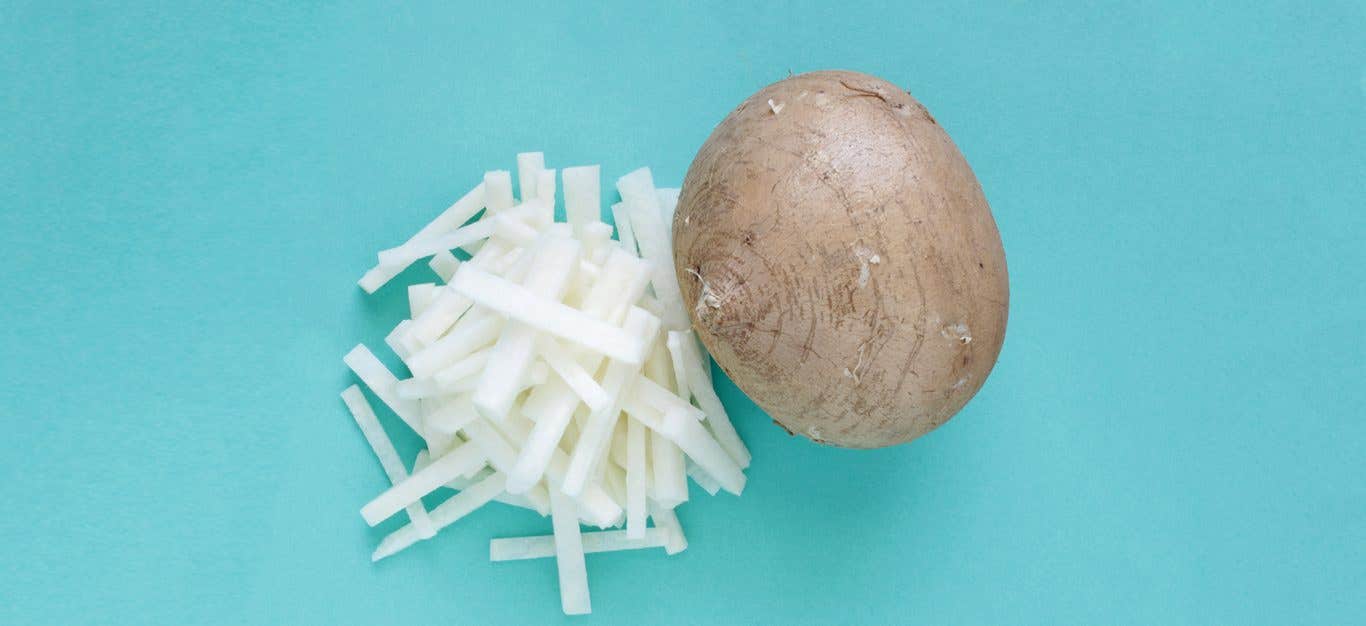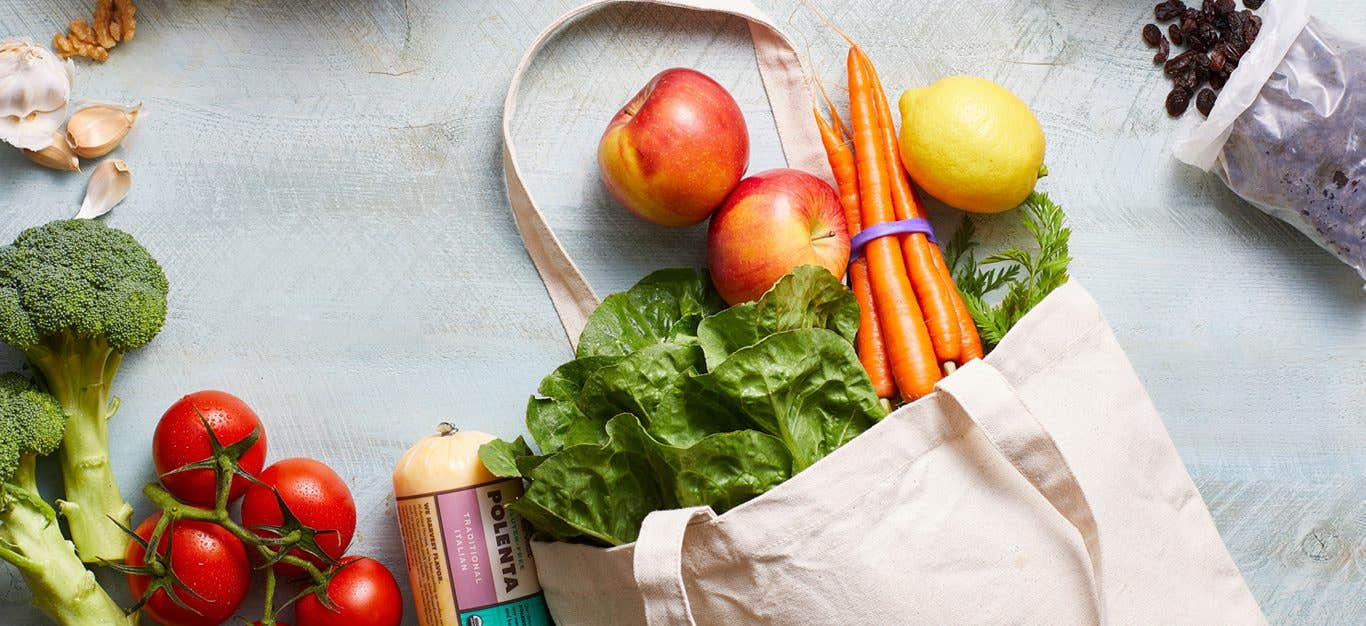Buy only the best when you shop for produce this summer. Read on for a rundown of all the fruits and vegetables that are in season in the summer months. Click the link (or scroll down) for everything you need to know about the fruit or veggie, from selecting pieces at the store to keeping it fresh for longer in your kitchen.
Summer Vegetables
- Asparagus
- Beets
- Carrots
- Corn
- Cucumbers
- Eggplant
- Fresh Herbs
- Lettuce
- New Potatoes
- Peas and Sugar Snap Peas
- Tomatoes
- Zucchini and Yellow Squash
Summer Fruits
Summer Vegetables
The following vegetables are at their very best in the summer.
Asparagus
Asparagus begins to peak in late spring, but you can continue to find great asparagus through early summer. Shave asparagus into ribbons for an elegant salad or coat and roast spears for a tasty snack.
Selection Select bright green spears with tight heads that don’t look limp or soggy. Asparagus size is a matter of preference: Choose thick spears for roasting and thinner spears for quick steaming. Check the tips and ends. Ultra-fresh asparagus tips will have a slightly purplish hue. Ends that look pale or woody will be fibrous and tough.
Storage Store spears like a bouquet of flowers. Trim asparagus ends, then place ends-down in a large jar of water in the fridge for up to three days.
Beets
Give beets a chance: One of the sweetest vegetables around, beets make excellent additions to salads and are especially delicious when roasted.
Selection Select small to medium beets. (Larger beets will be more fibrous and less sweet.) They should be plump and firm, with smooth, undamaged skin. Check any greens attached. They should look perky. Limp, wilted greens have already started tapping the attached beets for moisture.
Storage Cut away greens and taproots, as these will pull away moisture. Store in the fridge crisper up to two weeks.
Carrots
Selection There should be no signs of wrinkling or molding. Check any greens attached. They should look perky. Limp, wilted greens have already started tapping the carrot for moisture.
Storage Remove tops or leaves, and store in the fridge crisper up to two weeks.
Corn
Get cooking inspiration from our roundup of Finger-Licking Corn Recipes.
Selection Look for bright green, tight-fitting husks with brown, slightly sticky tassels at the end. Rather than peeling back the husk to see the kernels (a farmers market faux pas), gently squeeze to feel the corn through the husk. Kernels should feel firm and plump, not dented or deflated.
Storage Leave one or two layers of husk on the corn and store in a loose-fitting plastic bag in the fridge for up to three days.
Cucumbers
Though botanically a fruit, cucumbers are treated as a vegetable in the culinary world. Slice and dice them up for refreshing salads, veggie sushi, or starchy bowls.
Selection Look for firm, bright cucumbers with wrinkle-free skin.
Storage Wrap cucumbers tightly to store. Extreme cold makes cucumbers mushy, so they should be kept in a warmer part of the fridge, such as the door.
Eggplant
Enjoy eggplant in stews, baba ghanoush, and saucy Italian dishes. Eggplant is also great for making veggie “steaks” to grill.
Selection Select small- to medium-size eggplants with smooth, firm skin and no soft spots or tan patches. Large eggplants may be bitter. Check the stem, which should be green and supple. Look for a shine; eggplant skin turns dull over time.
Storage Store at room temperature for up to three days. The humidity in the fridge isn’t ideal for perishable eggplant.
Fresh Herbs
Fresh herbs are at their best in the summer, and they can bring out the best in myriad other produce on this list. Check out our guide for pairing fresh herbs and produce for some of the most delicious combos.
Selection When buying fresh herbs, select bright green bunches with thin, tender stems and no signs of yellowing or browning. Check the stem bottoms. They should be bright and firm, not brown and gooey.
Storage Store like a bouquet for five to seven days in a jar or vase filled with water on the counter or in the fridge (except basil, which gets brown in the fridge). Change the water regularly.
Lettuce
Lettuce is available all year round, but it peaks from late spring and early summer. Follow the general shopping and storage tips here, or check out our comprehensive guide to lettuce for the scoop on different varieties and how to choose and use them.
Selection Select greens that look crisp, dry, and ruffly with no browning, yellowing, or wilting leaves. Check for symmetrical heads that haven’t had outer leaves trimmed away. The cut stem end should look dry with only a little browning.
Storage Store whole in a large mesh or paper bag in the crisper drawer for up to three days. Washed and dried leaves will keep for up to three days in the fridge. Remove any wilting or browning leaves.
New Potatoes
New potatoes have waxier skin than fully grown potatoes, so they hold their shape better when cooked. Try them in potato salad. Check out our guide to cooking with every type of potato.
Selection Select firm, smooth-skin potatoes that don’t show signs of sprouting, cuts, or black spots.
Storage Check for same-size tubers that will cook in the same amount of time. Store at room temperature in a cool, dark cupboard or drawer for up to three months. Refrigeration can affect potatoes’ color, flavor, and texture by causing their starches to convert to sugars.
Peas and Sugar Snap Peas
Peas are a simple way to bring subtle sweetness to casseroles and pasta dishes, but did you know they can also be blended into delicious sandwich spreads and even hummus? Sugar snap peas add a bit of crunch to grain-and-veggie bowls or creamy pasta dishes.
Selection Select firm, full, small- to medium-size pods that are a uniform bright green. Check the tips. Just-picked pods will have ends that are green and look fresh, not brown or dry. If buying shelled peas at the farmers market, ask when they were shelled. Once out of their pods, peas’ natural sugars quickly turn to starch, which can make them mealy.
Storage Store peas and sugar snap peas in a breathable (mesh or paper) bag in the fridge crisper drawer to allow humidity to circulate without trapping moisture. Shell or stem just before eating.
Tomatoes
Check out our roundup of tasty plant-based recipes that center on tomatoes.
Selection Look for plump, shiny, brightly colored tomatoes that show no signs of bruises, punctures, or cracks. A ripe, juicy tomato is fragrant and feels tender-firm and heavy for its size; a relatively lightweight tomato is still maturing. Tomatoes continue to ripen at room temperature, so if you’re buying a bunch, select tomatoes at various ripeness stages so they will last several days.
Storage Store at room temperature. Avoid refrigeration if possible; temperatures colder than 55 ̊F will change tomatoes’ taste and texture.
Zucchini and Yellow Squash
Make the most of summer bumper crops zucchini and yellow squash, and don’t overlook the squash blossoms!
Selection Select squash with firm, smooth, shiny skin that are about 8 inches long. Larger specimens have more seeds and can be bitter or watery. Check for firmness by giving the squash a gentle squeeze. Soft squash may have a dry, cottony texture.
Storage Store unwashed in a breathable (mesh or paper) bag in the refrigerator for up to five days. Summer squash will also keep for one to two days in a cool place away from direct sunlight.
Summer Fruits
Fresh fruit will help keep you healthy, happy, and hydrated through the dog days of summer. Here are the best fruits to buy now and how to select and store them.
Berries
Berries are a healthy and delicious way to sweeten up a wide range of dishes, including salads, baked desserts, chilled desserts, and even savory entrees. Check out our roundup of Yummy Summer Strawberry Recipes.
Selection Select vibrant, evenly colored berries that show no signs of softening. A whitish bloom on blueberries or small hairs on strawberries, raspberries, and blackberries indicate extra freshness: Both get brushed away with long storage and repeated handling. Check bottoms of containers for “weeping” juice—a sign that some berries may be crushed or starting to mold.
Storage Store berries uncovered in the fridge for up to three days. Wash only when ready to eat. Water rinses away delicate berries’ protective coating, and moisture speeds molding.
Muskmelons (Cantaloupe, Honeydew)
Grill melons for a sweet summery side dish or puree for a delightful dessert soup.
Selection Select muskmelons that feel heavy in your hand with skin that has yellowish (not green) undertones. Press the blossom end (opposite the stem end); it should give a little under gentle pressure and have a ripe fragrance. Check the stem end (the round indentation) for bits of stem or gashes, which are signs the fruit was cut off the vine too soon.
Storage Store muskmelons at room temperature for one to two days to develop flavors. Refrigerate for up to one week.
Watermelon
Nothing says summer like a perfectly ripe watermelon. Watermelon is a delicious snack in its own right, but it’s also phenomenal in gazpacho soup, chilled desserts, and fruit salads.
Selection Choose watermelon with a large, creamy yellow spot on its side, which means it fully ripened in the field. For cut watermelon, look for flesh that is firm, not grainy, with dark brown or black seeds (if any). Check the skin for cracks indicating overripeness. Give the fruit a thump with your finger; it should sound hollow.
Storage Store watermelon in a cool, dry spot for up to two weeks before cutting it. Wrap watermelon slices in plastic wrap and place cubes in an airtight container, then refrigerate up to three days.
Stone Fruits (Apricots, Nectarines, Peaches, Plums)
Stone fruits are highly seasonal, so be sure to load up on the summer varieties while you can. The decadently sweet fruits are great in cobblers and salads.
Selection Opt for pink- and golden-hued peaches and nectarines, golden-orange apricots, and deep-colored plums with smooth skin and no signs of green, browning, or bruising. Freestone varieties have pits that easily pull away, making them easier to slice. Check the aroma, which should be sweet and fragrant. Stone fruits should not be rock-hard but give a little, though they will continue to ripen. Freckle-like “sugar spots” on peaches and nectarines indicate sweetness.
Storage Store stone fruits for up to three days at room temperature to ripen and improve flavor and texture, then refrigerate up to a week.
For more advice on preserving produce, see Best Tips for Storing Fruits and Vegetables.
This article was originally published on Jun. 11, 2020, and has been updated.

Related News
Get Our Best Price On The Forks Meal Planner

Forks Meal Planner takes the guess work out of making nutritious meals the whole family will enjoy.



